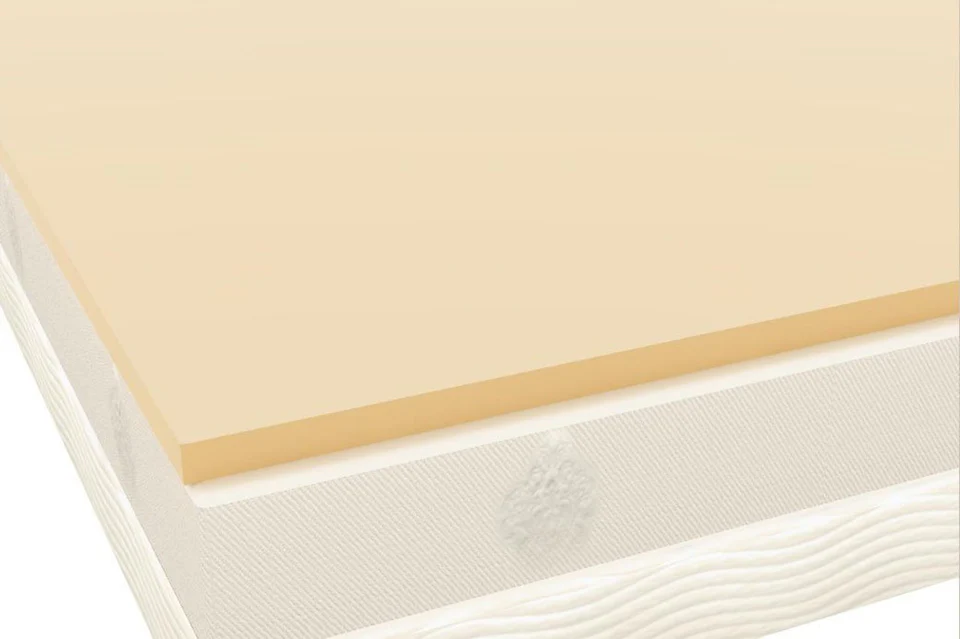Waking up tired, achy, or with back pain is not uncommon. Poor sleep is a problem many people experience due to a mattress that is either too hard, too soft, or just old. A new mattress is costly; not everyone is prepared to make that expenditure.
That’s where a foam mattress topper is a good idea. It’s a thick, cushy layer you place on top of your mattress to increase comfort and support. You might need it for extra cushioning, improved back support, or simply to correct an uneven mattress surface. Whatever the reason, a topper will do the trick. It’s inexpensive and simple to use—you just put it on your mattress, and your bed feels better in an instant.
Toppers are available in various types, such as memory foam, gel-infused foam, latex, and polyfoam. Each one has its advantages. Some conform to the shape of your body, some are cooler at night, while others provide additional bounce. The choice depends on how you sleep, your body shape, and the type of support required.
In this guide, we’re going to help you pick the best foam mattress topper for you—, o that you can get better, more refreshing sleep without overspending.
1. Know Your Foam Types
All types of foams are created differently. Quality is a key indicator of the way your foam toppers for mattresses will perform, the level of comfort they provide, and their durability as well.
Here’s the breakdown:
- Memory Foam
Memory foam promotes contouring and pressure relief by conforming to the shape of your body. But, it has the potential to be heat trapping if not combined with cooling factors.
- Gel-Infused Memory Foam
Offers the same support as memory foam but with better temperature control, making it ideal for hot sleepers. Some gel memory foam toppers are made with open-cell technology for better air circulation and breathability.
- Latex Foam
More responsive, naturally hypoallergenic, and breathable. If you don’t like the “sinking in” feeling of memory foam, then choose natural latex foam instead. For eco-friendly consumers who want to splurge, there are a number of brands that manufacture latex toppers made from 100 percent natural Talalay latex.
- Polyurethane Foam (Polyfoam)
An inexpensive support solution for occasional use, guest beds, or college dorms. Less contouring, less durable – but sufficient for a patchwork solution.
Tip: In the long term, always opt for high-density foam (3–5 lbs/ft³) for increased durability.
2. Select the Proper Thickness
The thickness of a foam topper is not merely a matter of plushness—it’s whether you require more support and pressure relief. More supportive toppers are thicker, and less supportive ones are thinner. Thicker toppers have more contouring, and thinner ones have light surface softness.
- 1–2 inches: Ideal for minor comfort enhancement or minor mattress irregularities. Ideal for very firm mattresses that only require a soft touch.
- 3 inches: Provides a balance of support and softness, the most widely used option. Suits average-weight sleepers.
- 4 inches or higher: Suitable for heavy people or individuals sleeping on extremely firm or outdated mattresses.
As sleep specialists explain, 3–4″ memory foam mattress toppers can minimize pressure points by as much as 30% (Sleep Foundation).
3. Opt for the Suitable Firmness Level
Your sleeping position will decide the optimal firmness level of a topper. If you choose the wrong one, it might be worse than good.
- Soft: Most suitable for side sleepers. It supports the hips and shoulders while minimizing pressure points.
- Medium: Ideal for back sleepers requiring balanced spinal alignment and minimal contouring.
- Firm: Ideal for stomach sleepers to prevent the pelvis from sagging, ensuring a neutral spine.
4. Look for Cooling Features
Foam has a reputation for retaining body heat. If you sleep hot, search for temperature-management features in your topper.
- Gel-infused foam: Spreads heat more evenly.
- Ventilation holes: Encourage airflow throughout the foam layers.
- Open-cell structure: More breathable than standard memory foam.
- Cooling covers: Bamboo or TENCEL™ fabric covers can draw away sweat and provide softness.
As per a Harvard Health study, core body temperature must decrease by around 1.5°F for best sleep, so it actually makes it easier for you to fall asleep if you have a cooling topper.
5. Look for Certifications
The quality of foam matters greatly—not only for comfort but also your health. For avoiding chemicals that are not good for your health and the smell of off-gassing, always opt for top-rated certifications.
- CertiPUR-US®: This guarantees that the foam is produced without the use of ozone depleters, heavy metals, or toxic flame retardants.
- OEKO-TEX®: Ensures textiles and fabrics are inspected for harmful chemicals.
- GOLS or GOTS: For organic cotton or latex, these certifications ensure responsible and sustainable sourcing.
6. Match the Topper to Your Sleeping Position
Various sleep postures require different support and pressure relief. Here’s a brief rundown:
| Sleeping Position | Best Topper Type | Recommended Thickness |
| Side Sleepers | Soft memory foam | 3″–4″ |
| Back Sleepers | Medium firmness foam | 2″–3″ |
| Stomach Sleepers | Firm latex or polyfoam | 1″–2″ |
This combination keeps your spine in line and prevents you from feeling pain from too much or too little support.
7. Think about Motion Isolation
Bed-sharing = having to endure your partner’s movements. If you’re a light sleeper, this will break your sleep.
Memory foam and gel-infused foam are best at motion isolation. They soak up movement and stop it from transferring through the bed surface. So if your partner is getting up a lot, you’re less likely to notice the effect.
8. Double-Check Mattress Size
One of the most common mistakes that consumers make is buying the wrong topper size. Always ensure the topper matches your mattress size to prevent shifting, overhang, or bunching.
Sizes offered:
- Twin / Twin XL
- Full / Full XL
- Queen
- King / Cal King
9. Inspect the Cover (If Applicable)
Several foam toppers come with a cover, but they are not all the same. Search for these handy features:
- Zipper closure: Facilitates removal and secure fit.
- Machine-washable material: Maintains hygiene and long-term use.
- Anti-slip bottom: Keeps the topper from moving during the night.
10. Read Reviews and Return Policies
Reading reviews and learning about return policies are the important steps to take when purchasing a foam mattress topper. Customer reviews provide real-world feedback about how the topper works after some time, its level of comfort, durability, and how well it is able to withstand various sleeping conditions.
They can bring up issues that may not be apparent from the product descriptions themselves. Also, knowing the return policy is necessary because it gives you a safety net in case the topper does not live up to your standards.
Some companies provide trial periods so that you can test the item at home, while others may have return or exchange time limits. Understanding these prior to the purchase ensures your transaction is low-risk and that you are able to make adjustments as needed without added inconvenience.
Conclusion
Spending your money on a quality foam mattress topper can significantly affect the quality of your sleep and your daily well-being. Knowing the different types of foam, thickness, firmness, and cooling features, etc. help you choose the one that is best for your mattress and sleep style.
A good topper should make your bed comfortable, help support your back, and relieve pressure on your body, so you wake up feeling better and with less pain. You should also read reviews from customers and check the safety labels to ensure you are getting a well-made, safe product that will last.



